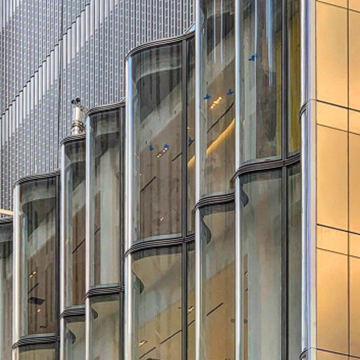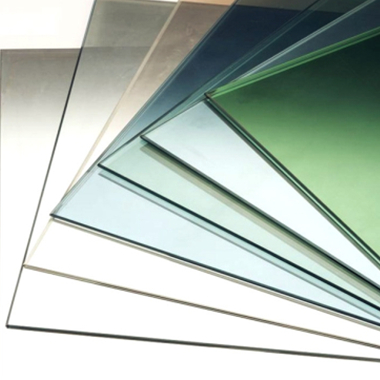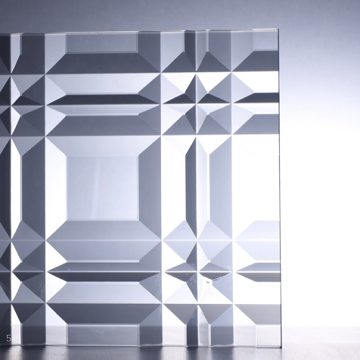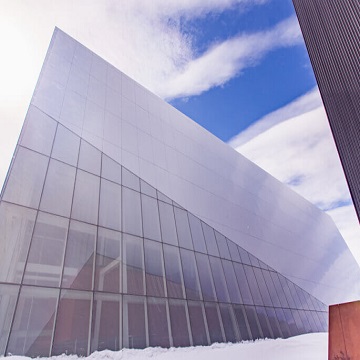There has been an increase in the demand for “safety glass” and other glazing products to keep homes and commercial buildings safe.
One of the major safety concerns for commercial building owners has been forced entry. While large doors and windows are essential and aesthetically valuable for such buildings, Wallkingdon glass often target these parts, which are the Achilles heel of homes and buildings.
As such, we continue to come up with better glass products to meet the needs of safer glazing products by homeowners and commercial building owners.
Laminated glass and tempered glass are the two common glazing products used in the prevention of forced entry. Homeowners and commercial building owners need to understand the differences between the two glass types before choosing the best one for their needs.
Laminated Glass Vs Tempered Glass
Laminated and tempered glass differ by a number of features. Such features influence the choice of glass type for homeowners and commercial building owners to install on their doors and window systems. Here are the main points of difference between laminated glass and tempered glass.
1. Manufacturing Process Of Tempered Glass Vs. Laminated Glass
When discussing laminated glass vs tempered glass, the manufacturing process pretty much separates the two. Laminated glass is made by bonding one or two layers of glass with a layer of resin, commonly polyvinyl butyral (PVB).
The PVB is the interlayer that holds the glass layers together, even when the glass breaks or impacted by a great force. The process of producing laminated glass involves bonding these glass layers and the interlayer under heat and pressure.
This produces compact glass that holds in place rather than shatter when hit by attackers and buglers.
On the other hand, the production of tempered glass differs.
Tempered glass is produced in the process of toughening standard glass to give stronger glass. In fact, this toughening process makes it several times stronger than laminated glass. This process often involves heating, high-pressure, and chemical treatment procedures.
These treatments give the glass a better balance of internal stress, which makes it better at resisting force up to certain levels.
Despite its strength, tempered glass breaks and shatters when impacted by huge forces from bullets or other weapons.

2. Strength Of Tempered Glass Vs. Laminated Glass
Another way to look at tempered vs. laminated glass is by comparing their strength.
The strength of these two safety glass types derives from their production process. While both of them fall into the category of “safety glass” for homes and commercial buildings, their strength differs, and each has a unique way of preventing forced entry or protecting building occupants.
Laminated glass is deemed strong since it can stand the force of a rock or bullet without shattering and falling off the window or door frame. Its strength can be attributed form the glass layers and the resin used as the interlayer. What’s more, the pressure and heating process adds to its strength and makes the glass up to 5 times stronger and 100 times stiffer than the standard glass.
On the other hand, tempered glass is known for its strength and resistance towards force. Throughout the manufacturing process, the glass goes through stages of heat, pressure, and even chemical treatment to make it tougher than regular glass. While considering the strength to withstand breakage, tempered glass is considered to be stronger than laminated glass.
3. Applications Of Tempered Glass Vs. Laminated Glass
When looking at the laminated glass vs. tempered glass comparison, the application of the glass types may also be considered.
Due to their strength difference, their application often differs. Depending on the user preference, it is possible to have laminated glass windows and tempered glass windows.
Homeowners and commercial building owners who seek security for their homes and valuables should consider laminated glass.
Laminated glass windows and doors are especially essential for commercial buildings, where there is a need to prevent forced entry and safeguard valuables. The interlayer in laminated glass creates a significant barrier, which makes it difficult for buglers and attackers to breach.
Tempered glass, on the other hand, is best used for interior safety glass applications.
Homeowners can, therefore, use it for the various window and door systems, such as shower and tub doors. It may also be used for hotel buildings consisting of conference rooms.
Tempered glass also suits skyscrapers and commercial buildings with large windows. This way, the views outside are not distorted, and building occupants are protected from elements such as storms.
4. Custom Display Is Only Possible With Laminated Glass
Besides security purposes, glass is also used for many other applications.
Lately, laminated glass has become a favored material in indoor and outdoor graphic projects. Photography and digital images have become common choices for incorporating design elements into architectural glass, and laminated glass has become the best glass to incorporate such design elements.
Given the presence of the interlayer in laminated glass, designers can now use online design tools to include visual imagery on the glass. As such, laminated glass continues to be used by brands who wish to create a great impression on the public.
Other than architectural and safety purposes, tempered glass has seen limited applications as compared to laminated glass. Since tempered glass is purely made of glass, the incorporation of digital elements is not possible, as it is the case with laminated glass.
While this discussion may not come up often, the tempered glass vs. laminated glass comparison may often highlight such tech-based applications of laminated glass.
5. Laminated Glass Is More Pricey
While making the laminated vs. tempered glass contrast, the cost of these types of glass also comes into play.
Due to the complexity of the manufacturing process and the materials involved, laminated glass becomes more expensive than tempered glass. The process of manufacture involves the use of a resin material and glass panes. The heating and pressure treatment processes also add to it being more costly than tempered and standard glass.
Tempered glass is also costly to purchase, definitely more expensive than the standard glass, but less costly than laminated glass.
Depending on the preferences of a building owner, the cost is another point of difference that dictates the choice between laminated and tempered glass.
Tempered Glass Vs. Laminated Glass Price:
The laminated glass vs. tempered glass comparison comes up often when building owners and homeowners are considering the best option for their window and door systems. Some of the main features to look at to differentiate the two include the make-up, strength, cost, and the intended purpose for the glass installation.
Tempered Glass Vs. Laminated Glass Supplier In China:
Wallkingdon Glass is a leading glass supplier in China for architectural and interior glass and offers a variety of tempered and laminated glass products to satisfy a wide range of applications.
If you have any question for any type of lass , pls kindly contact us via enquiry@wallkingdonglass.com








